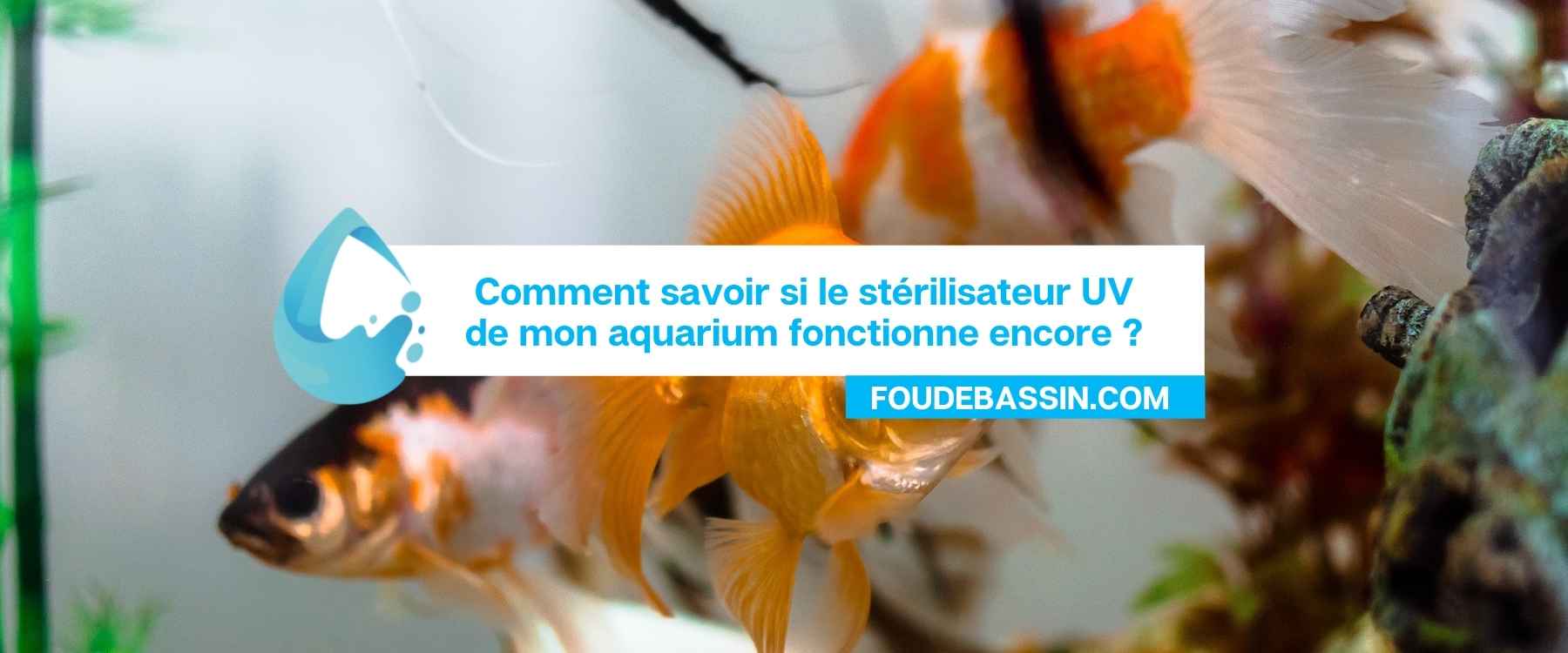Retrouvez ici les indispensables et meilleures ventes pour nos propriétaires de bassin.
Retrouvez ici les indispensables et meilleures ventes pour nos propriétaires de bassin.

On this blog, we have not yet touched on the question of the UV sterilizer for the aquarium. This tool destroys harmful floating microscopic organisms, such as bacteria, viruses or even residual algae. Its operation is very simple.
The sterilizer diffuses light with a very high intensity of ultraviolet rays. But… how do I know if my aquarium's UV sterilizer is still working?
To maintain a completely sanitized environment, this tool must operate 24/7. That said, this rule is valid except in a few exceptional cases. When setting up (before there are any fish in the aquarium), you will likely be adding good bacteria to your aquarium water. At this time, keep your UV sterilizer off, as UV light kills bacteria.
Also, some aquarists turn on their UV sterilizers intermittently to allow phytoplankton and zooplankton to feed. However, this also allows parasites to do the same. It is therefore illogical to turn on your UV sterilizer every other day. If you have installed a UV sterilizer, it is to protect your fish from parasites at all times.
If you install a UV sterilizer in your aquarium, be sure to write down the date of installation somewhere. A useful technique is to write the date on the cardboard and keep it safe in the attic or cellar. By doing this, you will know when to change your UV sterilizer. In fact, the bulbs should be changed every 6 or 12 months, depending on the brand of the bulb and the manufacturer's recommendations. And to know when to change sterilizer, don't hesitate to test your water to check its parameters: pH, kH, nitrites, nitrates, phosphates, oxygen, etc.
Some garden centers and aquarists routinely change their UV sterilizers every six months to ensure they are still working optimally.
When replacing a bulb, also remember to clean the inside of the quartz tube every year, as it forms a transparent barrier between light and water, and if it is covered with limescale or dirt, the light cannot penetrate as effectively.
Each time you change the bulb, you will have to spend a few minutes cleaning the sterilizer. To do this, disassemble the device, remove the bulb and remove the foam filter to clean it completely. Then wash the inside of your UV sterilizer. Finally, add a brand new UV bulb before reassembling the kit.
A UV sterilizer clarifies water color, reduces pathogens and removes oxidants. To choose it, make sure that the technical characteristics of the tank are compatible with the use of salt water or fresh water depending on the type of water present in the aquarium. As a general rule, they are all compatible with fresh water, but not necessarily with salt water.
In addition, check that the flow rate and power of your sterilizer are sufficient. The higher the energy rating of your sterilizer, the better the device will be able to kill germs at the DNA level. The flow must be proportional to the size of the jar.
Here are some examples of effective aquarium UV sterilizers :
Just like the rest of the elements of your aquarium (accessories, filtration system, substrate) it is crucial to take care of your UV sterilizer. After all, it is what improves the well-being of your fish population and helps keep your aquarium water clear! Is your aquarium water turning green? Quickly discover our article dedicated to this theme.
Aquipond Greenstab - Natural treatment against pond algae It is a natural product that helps limit algae at any time. It also has a prevent...
View full detailsReduces the layer of silt in the pond by at least 40% Easy to use with less impact on biodiversity Prevents fermentation, bad odors. pH ...
View full detailsOrganic dye to block plant growth by limiting photosynthesis ORGANIC PRODUCT NON TOXIC TO HUMANS (DIVING) AND FISH. 100% NATURAL AND BIODE...
View full detailsThe positive effects of barley straw have been known to water enthusiasts for a long time. But currently barley straw is difficult to find and i...
View full detailsReduces at least 40% of the layer of silt in the pond Easy to use with less impact on biodiversity Prevents fermentation, bad odors. ...
View full details
Leave a comment